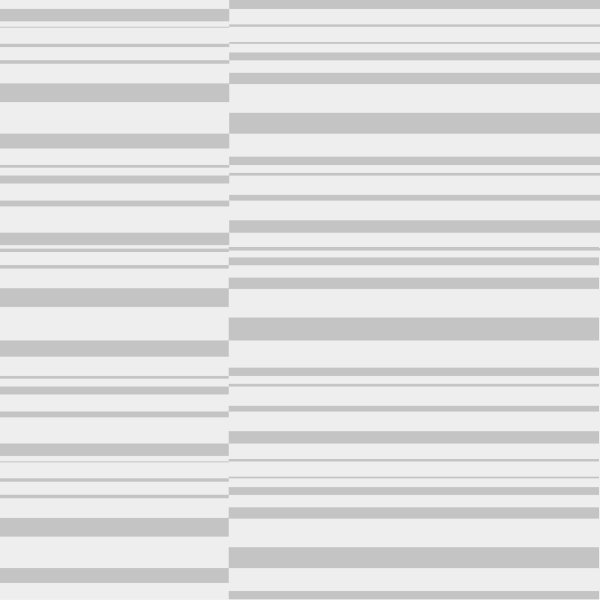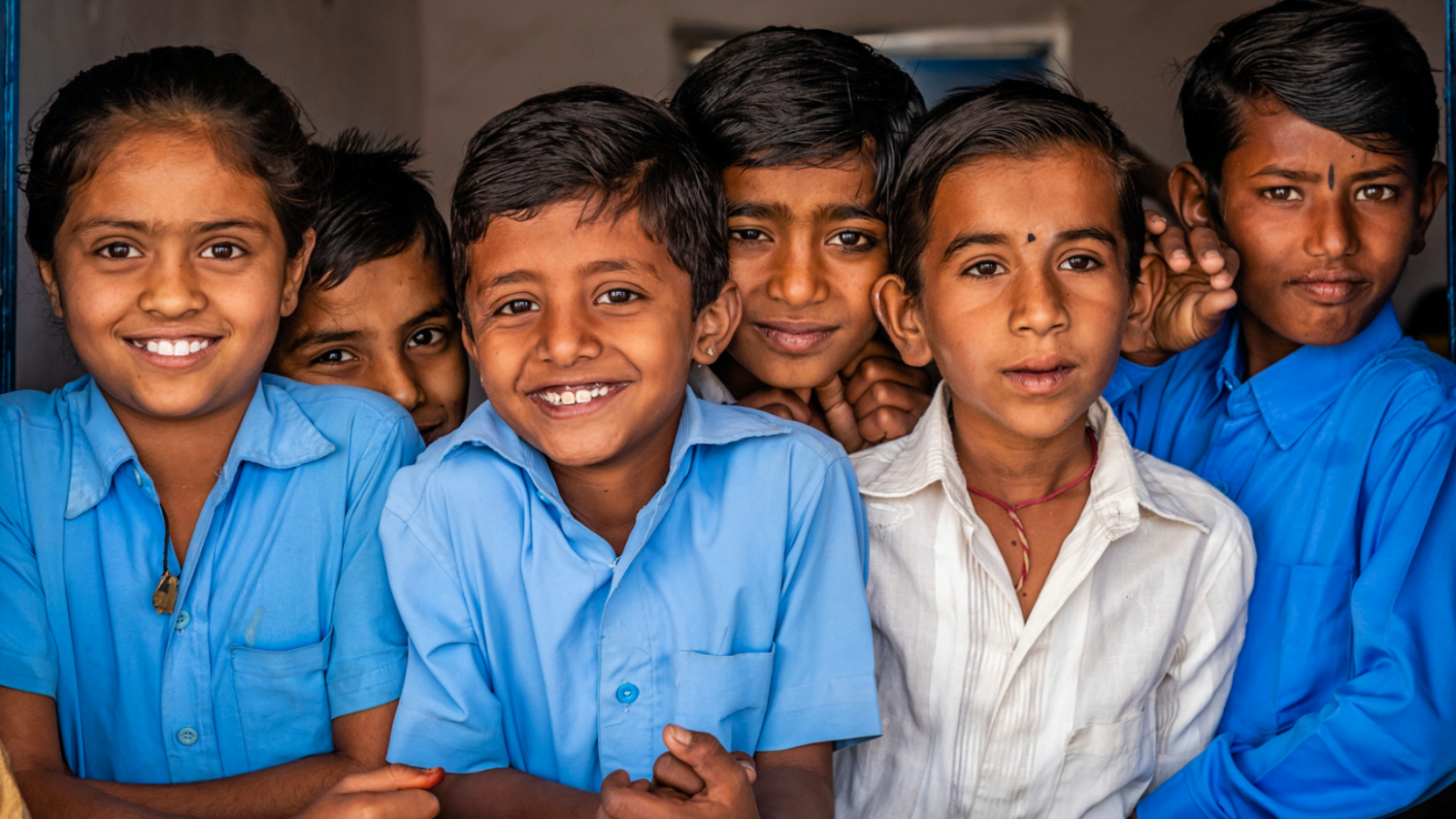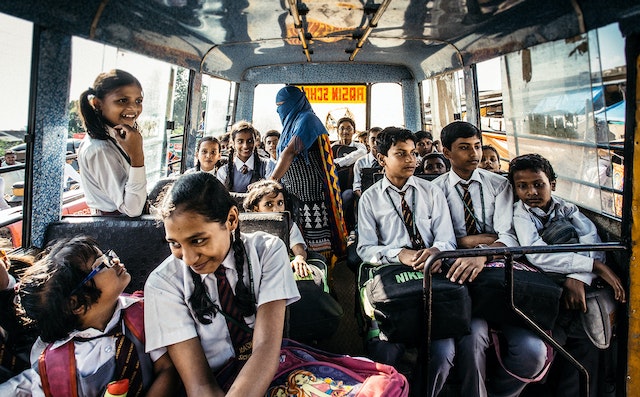
How Accessible is Education for Students with Visual Disabilities
An Analysis of Digital Resources
Summary: This report re-emphasises India’s legal obligation to make all educational content available in audio, print and electronic media accessible to persons with visual disabilities
(The full version of this report can be downloaded via the button at the end of this page)
Background
In June 2020 Vidhi Centre for Legal Policy published a report titled, ‘Towards a Post-COVID India: 25 Governance Challenges and Legal Reforms’ wherein its chapter, ‘Making Digital Education Inclusive’ highlighted the legal and policy gaps in making digital education modes and platforms accessible and inclusive for students with disabilities. The question of accessibility of digital education resources is especially urgent in light of the COVID-19 pandemic where reliance on digital education has substantially increased for students and teachers. The current report is an extension of the briefing book chapter that aims to re-emphasise India’s legal obligation to make all educational content available in audio, print and electronic media accessible to persons with disabilities.
Students with disabilities struggle to access schooling, including access to digital modes of education. For students with visual disabilities, accessibility also includes the use of digital tools that can improve their ability to easily navigate through materials and access content without having to rely on Braille textbooks. Accessible content does not include just textbooks but also the design of learning activities that are designed to deepen the understanding of new concepts.
While the Right to Education (RTE) Act mandates Teaching and Learning Materials(TLM) to be made available in accessible formats for all students, including students with disabilities, the focus of the government has largely been on infrastructural accessibility in the form of ramps, railings, etc. Although such inputs ensure that a child can enter into a school’s premises, the inaccessibility of the actual subject matter is what ultimately leads to exclusion from schooling for students with disabilities.
A recent petition filed by the National Association for the Blind (NAB) in the Bombay High Court regarding inaccessibility of digital education also raised the issue of inaccessibility of the DIKSHA platform for students with visual impairment. Keeping abreast with the recent developments in the PIL, this study aims to provide empirical evidence of the ‘extent of inaccessibility’ of learning materials hosted on the DIKSHA platform and suggestions on how it can be improved.
Methodology
To probe the issue further, this report conducted a systematic review of the Digital Infrastructure for Knowledge Sharing (DIKSHA) portal, which is ‘a national platform for school education’, initiated by the National Council for Education Research and Training (NCERT), Ministry of Education, India. Owing to its popularity and wide coverage across India, DIKSHA provides a unique opportunity to empirically assess the extent of inaccessibility of the TLM used across the country. Beyond accessibility of e-learning resources, this study also uncovers the urgent need for curriculum and content of textbooks to be updated, to ensure inclusion of students with visual disabilities.
A sample of 65 chapters from NCERT and SCERT (State Council of Educational Research and Training) textbooks were selected for analysis, including 22 from NCERT e-textbooks and 22 and 21 from SCERT e-textbooks for Telangana and Tamil Nadu, respectively. This data was collected between December,2020 and January, 2021.
NCERT sampled chapters were selected for English, Mathematics, Science, Geography, History, and Economics, for grades 1, 5, 8 and 10. SCERT e-textbooks for the state of Tamil Nadu were sampled for grades 1, 5, 8 and 10, for Mathematics, English, Environmental Studies (EVS), Science, and Social Sciences. Telangana SCERT textbooks were sampled for grades 1, 5, 8 and 10 across English, Mathematics, EVS, Social Science and Sciences.
Additionally, an assessment of the accessibility of ‘learning activities’was also undertaken. For this, only NCERT textbooks were assessed. Learning activities are defined as activities students are instructed to do while reading a chapter. Chapters often have activities, questions or problems that students must solve to ensure their understanding of new concepts.When these are heavily reliant on images or other inaccessible elements of a chapter, they are inaccessible for students with visual impairments. For instance, in a mathematics textbook for grade 1, children are asked to look at images of two lines of different widths and choose the image that is thicker. This reaffirms pre-numeracy concepts of relative comparisons between objects. However, for a student with visual impairment, a learning activity that is reliant on being able to see images is inaccessible. While all elements of textbooks should be accessible, the true harm to students with visual impairment comes from learning activities that are not accessible to them.
Key Findings
Assessment of inaccessibility was conducted on two fronts:
- Inaccessibility of the web and mobile phone DIKSHA platform
- Inaccessibility of the resources hosted on the DIKSHA platform
Inaccessibility of the web and mobile phone DIKSHA platform
Web platform
The DIKSHA platform is designed such that a student or teacher can search for learning materials by their state, medium of instruction and curriculum boards, within which they can look for materials for their grade, subjects and chapters within subjects. However, for students with visual disabilities using a screen reader, the web platform has a variety of accessibility issues that makes it difficult for them to independently navigate it to search and access the content they are looking for.
Take for example, the drop down menu for language selection. Rather than clearly stating different language options available, the screen reader announces “clickable, clickable, clickable”. This is due to different scripts used for the different languages,which are not readable by a screen reading software. Similarly, the filter for selecting grades is not accessible with a screen reader. Finally, even if a student is able to find the relevant page with the textbooks and other learning materials to select from, the links for opening or downloading materials are not properly labelled, making it difficult for students to download the books independently.
Mobile platform
The mobile application of the DISKHA platform had only a few elements, such as QR codes, that could not be used independently by a student with visual disability. However, the mobile application is only available for android devices, despite IOS being more accessible for persons with visual disability. Additionally, it is key to note while the mobile application is far more accessible than the web platform, students with visual disabilities prefer to still use computers at they find it easier to navigate reading materials with the use of a keyboard due to the various shortcuts and other capabilities screen reading softwares provide when using a keyboard.
Inaccessibility of the resources on DIKSHA platform
Inaccessibilityof learning materials reported have been clubbed into two categories:
- Complete inaccessibility: Where documents/ e-textbooks are not uploaded in appropriate e-text formats, meaning that a screen reader is unable to navigate any part of the material. In some cases, multiple pages within a chapter are uploaded in inappropriate formats, such that a screen reader skips on to the next accessible page. This makes it impossible for a student with visual impairment to follow the content. To provide an example, in a mathematics chapter consisting of 48 pages, 34 or 70.1% of the pages were not accessible to a screen-reader.
- Partial inaccessibility: Where uploaded in an appropriate e-text format such that the screen reader can navigate the document broadly, it, nevertheless, contains elements, such as images, tables, graphs, watermarks, etc., that make it difficult for a student with visual impairment to fully comprehend the content of the material.
Some of the more specific findings of the study include:
- All chapters sampled from NCERT e-textbooks were uploaded in an appropriate e-text format of which 36.4% were completely accessible. However 54.5% had inaccessible elements, and 9.1% were completely inaccessible.
- Of the 21 SCERT chapters sampled for Tamil Nadu, 90.5% were totally inaccessible. Of the remaining chapters, 1 was partially inaccessible, including inaccessible elements such as tables and images without descriptions. Only one of the sampled chapters was totally accessible using a screen reader.
- Of the 22 SCERT chapters sampled for Telengana, none were totally inaccessible, however 95.5% were partially inaccessible, and only one chapter was totally accessible.
Table 1: Accessibility of sampled chapters
| Assessment | Tamil Nadu SCERT | Telangana SCERT | NCERT |
| Totally Accessible (%) | 4.5% | 4.5% | 36.4% |
| Totally Inaccessible (%) | 90.5% | 0 | 9.1% |
| Partially Accessible (%) | 4.5% | 95.5% | 54.5% |
| Total no. Chapters | 21 | 22 | 22 |
Inaccessibility of learning activities:
Over the 22 sampled chapters from the NCERT, a total of 907 learning activities were identified, of which 52.6% were inaccessible to a student using a screen reader, and the inaccessibility varied by grade and subject.
Mathematics chapters had the highest number of inaccessible learning activities at 80%. English Science and Geography chapters had 49.1%, 33.9% and 32.8% inaccessible learning activities, respectively. Economics chapters had 23.1% inaccessible learning activities.
Table 2: Inaccessibility of learning activities by subject
| Subjects | Inaccessible learning activities | No. of LA |
| English | 49.1% | 110 |
| Mathematics | 80.0% | 360 |
| Science | 33.9% | 304 |
| Geography | 32.8% | 61 |
| History | 0.0% | 20 |
| Economics | 23.1% | 52 |
| Total | 52.6 | 907 |
Chapters sampled from grade 1 had the highest extent of inaccessible learning activities at 94.2%. This was followed by grade 8 chapters at 54.6% and grade 10 chapters at 48%. However, this is likely partially led by the selection of subjects within grades. Grade 1 for example had sampled chapters only from Mathematics and English textbooks. The next set of tables compares inaccessibility of the same subject across grades.
Table 3: Inaccessibility of learning activities by grade
| Grade | Inaccessible learning activities | No. of LA | Subjects |
| Grade 1 | 94.2% | 138 | Eng, Math |
| Grade 5 | 22.6% | 155 | Eng, Math, Science |
| Grade 8 | 54.6% | 262 | Eng, Math, Science, Geography |
| Grade 10 | 48.0% | 352 | Math, Science, Geography, History, Economics |
| Total | 52.6 | 907 |
Mathematics chapters were selected from all four grades. In the table below grades 1 and 5 are clubbed under primary and grades 8 and 10 are clubbed under secondary. We found that mathematics chapters from primary grades had only a marginal 2% higher number of inaccessible learning activities than mathematics chapters from secondary grades.
Table 4: Inaccessibility of learning activities in mathematics by level of schooling
| Grade- subject | Inaccessible learning activities | No. of learning activities |
| Math (primary) | 81.3% | 123 |
| Math (secondary) | 79.3% | 237 |
| Total in Math | 80 | 360 |
Science chapters were sampled only for grades 5, 8 and 10. Chapters from grades 8 and 10 had a higher extent of inaccessible learning activities with about 41% and 42% respectively, compared to only 13.4% inaccessible learning activities in grade 5 science chapters sampled.
Table 5: Inaccessibility of learning activities in Science by level of schooling
| Subject-Grade | Inaccessible learning activities | No. of learning activities |
| Science (5) | 13.4% | 82 |
| Science (8) | 41.0% | 78 |
| Science (10) | 41.7% | 144 |
| Total in Science | 33.9 | 304 |
An accessible version of the full report in Ms Word format can downloaded here.





